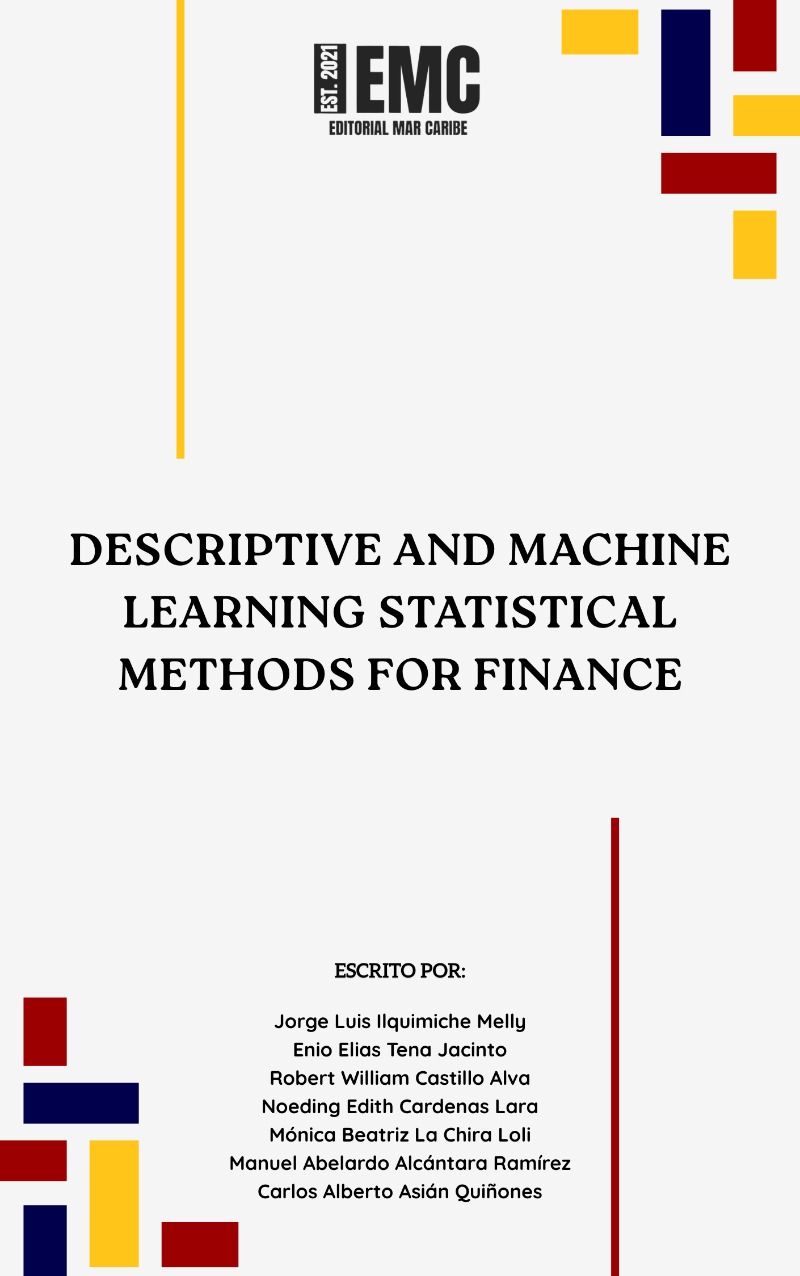
Descriptive and machine learning statistical methods for finance
Tena Jacinto, Enio Elias
Castillo Alva, Robert William
Cardenas Lara, Noeding Edith
La Chira Loli, Mónica Beatriz
Alcántara Ramírez, Manuel Abelardo
Asián Quiñones, Carlos Alberto
Editorial:Editorial Mar Caribe
Materia:Matemáticas estadísticas
Público objetivo:Profesional / académico
Publicado:2025-10-31
Número de edición:1
Tamaño:5Mb
Precio:$430
Soporte:Digital
Formato:Pdf (.pdf)
Idioma:Inglés
Libros relacionados
Descriptive and machine learning statistical methods for finance: Prediction, classification, and uncovering complex patterns - Ilquimiche Melly, Jorge Luis; Cardenas Lara, Noeding Edith; Castillo Alva, Robert William; Tapia Díaz, Abel; Zevallos Vera, Janeth Magaly; de la Torre Collao, Luis Alberto; Rostaing Ccapacca, Gean Pierre
Descriptive and machine learning statistical methods for finance: Theories and case studies - Sakibaru Mauricio, Luis Alberto; Ortega Rojas, Yesmi Katia; Asián Quiñones, Carlos Alberto; Zapata Villar, Loyo Pepe; Bazan Robles, Romel Dario; Farfán García, Jose; Rojas Orbegoso, Jorge Luis
Métodos estadísticos paramétricos y no paramétricos asistidos con Python y Matlab - Cordova Espinoza, Mariela Lizety; Ponte Valverde, Segundo Ignacio; Panocca Orellana, Walter Jacinto; Zapillado Huanco, Oscar Adrian; Armas Juarez, Ricardo Antonio; Asnate Salazar, Edwin Johny
Métodos estadísticos asistidos con software: Aplicaciones en Python, Octave y R - Asnate Salazar, Edwin Johny; Correa Becerra, Ramón Cosme; Villareal Torres, Henry Oswaldo; Corcuera De los Santos, Marco Antonio; Valencia Castillo, Edwin Alberto; Rodríguez Ávila, Sandra Cecilia; Yajahuanca Huancas, Raúl
Reseña
These methods involve summarizing and describing the key features of financial data. Common descriptive statistics include measures of central tendency (mean, median), dispersion (variance, standard deviation), skewness, kurtosis, and correlation coefficients. Descriptive analysis helps understand the distribution, trends, and relationships in financial time-series data, asset returns, risk measures, and other financial metrics. These methods form the foundation for more advanced modeling by providing initial insights into data behavior and characteristics.
Machine learning (ML) methods go beyond traditional statistics by enabling automated pattern recognition, prediction, and classification from complex, high-dimensional financial datasets. ML approaches used in finance include supervised learning (such as regression, classification, support vector machines, random forests, neural networks), unsupervised learning (such as clustering, dimensionality reduction), and reinforcement learning. These methods are used for tasks like asset price prediction, portfolio optimization, fraud detection, credit scoring, and algorithmic trading. ML models can identify nonlinear relationships and interactions in financial data that traditional descriptive statistics might miss.




